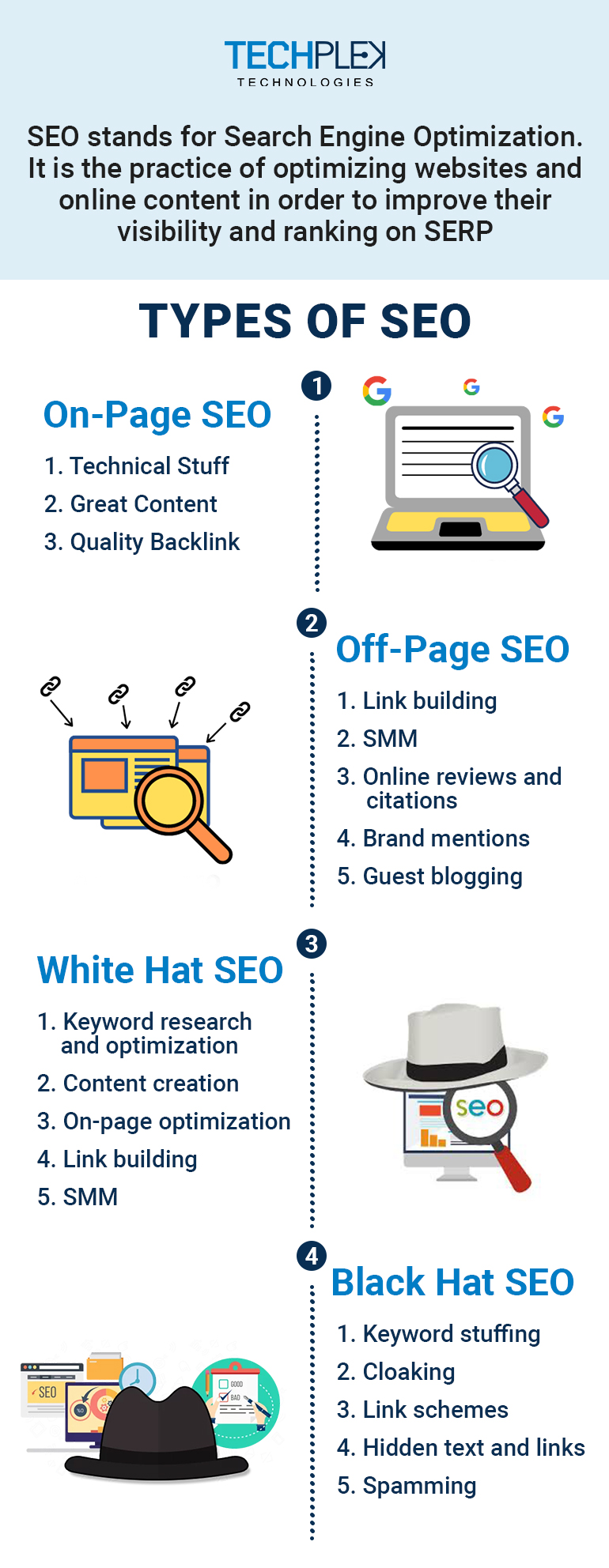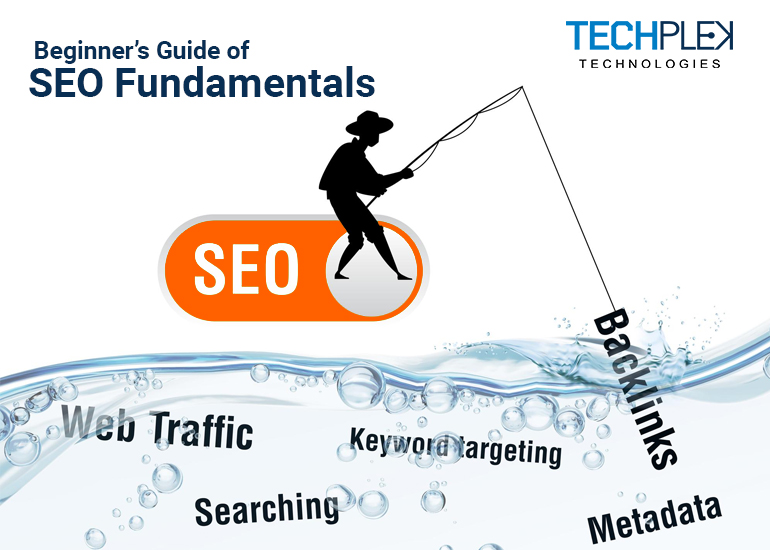If you want people to find your website through Google, you need to understand the fundamentals of SEO. You might be surprised to learn how easy these are.
This beginner's guide is all you need to learn SEO fundamentals from scratch!
Increase Your Website's Visibility In Search Engines With SEO!
SEO stands for Search Engine Optimization. It is the practice of optimizing websites and online content in order to improve their visibility and ranking on search engine results pages (SERPs). SEO aims to increase organic traffic to a website by improving its relevance, authority, and usability, which in turn can lead to higher engagement, conversions, and revenue. SEO involves a range of techniques, such as keyword research and optimization, on-page optimization (e.g. keyword research, improving content quality, meta tags, and internal linking), off-page optimization (e.g., link building and social media), technical optimization (e.g., site speed, mobile-friendliness, and schema markup), and data analysis and reporting. Successful SEO requires a combination of technical expertise, creative content creation, and strategic marketing.
SEO In A Nutshell: Top 3 Ingredients To Rank Your Website!
You don't have to be familiar with all of the factors and precise algorithms that Google uses to rank your website. However, to succeed, you need to cover the essential SEO elements.
There are three key aspects of SEO:
Technical Stuff: Technical SEO refers to the optimization of a website's technical aspects in order to improve its search engine visibility and performance. This includes factors such as website speed, mobile-friendliness, site architecture, URL structure, and use of structured data markup. By optimizing these technical elements, a website can become more search engine friendly and improve its chances of ranking higher in search engine results in pages.
Great Content: Content is king in the world of SEO. Great content not only helps to attract and engage users, but it also signals to search engines that your website is relevant and authoritative on a particular topic. Creating high-quality, unique, and valuable content that answers users' search queries can help improve your website's search engine visibility and attract organic traffic. Additionally, regularly updating and adding new content can help to keep your website fresh and relevant to both users and search engines.
Quality Backlinks: Backlinks are links from other websites that point to your website. Search engines view backlinks as a sign of trust and authority, as they indicate that other websites consider your content valuable and relevant. However, not all backlinks are created equal. Quality backlinks are those that come from authoritative and trustworthy websites, and are relevant to your content. Building a strong backlink profile by acquiring quality backlinks can help to improve your website's authority and search engine rankings.
SEO Useful Vocabulary: Terms & Definitions You Need To Know!

On-Page SEO: What It Is and How to Do It
On-page SEO, also known as on-site SEO, refers to the optimization of elements on a website in order to improve its search engine visibility and performance. This includes optimizing content, meta tags, internal linking, site structure, URL structure, images, and other on-page elements. The goal of on-page SEO is to provide a good user experience, ensure that search engines can easily understand and crawl the website, and help to establish the website's relevance and authority for specific topics and keywords.
Some key on-page SEO elements include:
- Keyword research and optimization: Identifying the most relevant and valuable keywords for a website, and optimizing content and other on-page elements to include those keywords in a natural and meaningful way.
- Content optimization: Creating high-quality, unique, and valuable content that answers users' search queries and provides a good user experience. This includes optimizing content for readability, relevancy, and user engagement.
- Meta tags: Writing compelling and informative meta titles and descriptions that accurately describe the content of a page and entice users to click through to the website.
- Internal linking: Creating a logical and well-structured internal linking hierarchy that helps users and search engines navigate the website and understand the relationships between different pages and content.
- Site structure and URL structure: Designing a website that is easy to navigate and understand, with clear and descriptive URLs that accurately reflect the content of a page.
By optimizing these on-page elements, a website can become more search engine friendly and improve its chances of ranking higher in search engine results pages.
Off-Page SEO: What It Is and How to Do It
Off-page SEO, also known as off-site SEO, refers to the optimization of factors outside of a website that can impact its search engine visibility and performance. This primarily includes link building, which involves acquiring high-quality backlinks from other websites. Off-page SEO is important for establishing a website's authority and trustworthiness, as well as for signaling to search engines that the website is relevant and valuable to users.
Some key off-page SEO factors include:
- Link building: Acquiring high-quality backlinks from other websites that are relevant and authoritative in the same or related industry.
- Social media marketing: Building a strong social media presence and engaging with users through social media platforms to increase brand visibility and traffic to the website.
- Online reviews and citations: Encouraging customers to leave positive reviews on popular review sites and local directories to build trust and credibility for the website.
- Brand mentions: Monitoring and responding to brand mentions across the web to build brand awareness and establish authority.
- Guest blogging: Writing high-quality content for other websites in the same or related industry to acquire high-quality backlinks and increase brand exposure.
By optimizing these off-page factors, a website can improve its authority and trustworthiness, as well as its chances of ranking higher in search engine results pages. Off-page SEO is an important part of a comprehensive SEO strategy and should be integrated with on-page SEO techniques for maximum effectiveness.
Both on-page and off-page SEO are important for achieving optimal search engine visibility and performance. A comprehensive SEO strategy should include both on-page and off-page optimization techniques in order to maximize the potential for organic traffic, engagement, and conversions.
White Hat SEO: What It Is and How to Do It
White hat SEO refers to ethical and legitimate optimization techniques and strategies that are approved by search engines and comply with their guidelines and best practices. White hat SEO focuses on creating high-quality, valuable content for users, improving website functionality and user experience, and building high-quality backlinks through legitimate means.
Some examples of white hat SEO techniques include:
- Keyword research and optimization: Conduct thorough keyword research to identify the most relevant and valuable keywords for a website, and optimize content and other on-page elements to include those keywords in a natural and meaningful way.
- Content creation: Creating high-quality, unique, and valuable content that answers users' search queries and provides a good user experience.
- On-page optimization: Optimizing on-page elements such as meta tags, internal linking, site structure, URL structure, and images to improve user experience and search engine crawlability.
- Link building: Acquiring high-quality backlinks from other relevant and authoritative websites through legitimate means such as guest blogging, broken link building, and influencer outreach.
- Social media marketing: Building a strong social media presence and engaging with users through social media platforms to increase brand visibility and traffic to the website.
White hat SEO is the preferred approach to optimization as it focuses on providing value to users and follows search engine guidelines. It can take longer to see results compared to black hat SEO, but it is a more sustainable and long-term approach that can help a website build a strong online reputation and authority.
Black Hat SEO: What It Is and How to Do It
Black hat SEO refers to unethical and manipulative optimization techniques and strategies that violate search engine guidelines and try to manipulate search engine algorithms to achieve higher rankings. These techniques focus on short-term gains and often involve deception and spammy tactics that can harm user experience and website reputation.
Some examples of black hat SEO techniques include:
- Keyword stuffing: Using excessive and irrelevant keywords in content, meta tags, and other on-page elements to manipulate search engine rankings.
- Cloaking: Presenting different content to search engines and users in order to manipulate search engine rankings.
- Link schemes: Using manipulative techniques such as buying links, link farms, and link exchanges to acquire backlinks and manipulate search engine rankings.
- Hidden text and links: Adding hidden text or links to content in order to manipulate search engine rankings.
- Spamming: Sending unsolicited and irrelevant content and links to users through email, comments, or forums in order to manipulate search engine rankings.
Black hat SEO can provide quick results in the short term, but it is not a sustainable or ethical approach to optimization. Search engines can penalize websites that engage in black hat techniques, resulting in lower search rankings, loss of traffic, and damage to website reputation. It is recommended to avoid black hat SEO and focus on ethical and legitimate optimization techniques to achieve long-term success.
Frequently Asked Questions:
Q.1 Can I do SEO on my own?
Yes, it is possible to do SEO on your own. However, it requires a certain level of knowledge, skills, and experience to effectively optimize a website and achieve higher search engine rankings.
While doing SEO on your own can be a cost-effective option, it can also be time-consuming and challenging, especially for beginners. It may be helpful to consult with a professional SEO agency or consultant for guidance and support.
Q.2 How can I learn SEO?
There are several ways you can learn SEO:
- Online Courses
- Blogs and Websites
- Books
- Webinars and Workshops
- Practice and Experimentation
It's important to note that SEO is a constantly evolving field, so it's important to stay up-to-date with the latest best practices and trends. By combining different learning methods and continuously experimenting, you can become proficient in SEO over time.
Q.3 How long does it take to learn SEO?
The time it takes to learn SEO varies depending on your prior knowledge and experience, the complexity of the subject matter, and the depth of your learning. Generally, it can take several months to a year or more to become proficient in SEO. Finally, SEO is evolving all the time. You should always stay updated and keep learning with the latest updates, experiments and findings.
Q.4 Do I need SEO tools?
SEO (Search Engine Optimization) tools can be helpful in improving your website's visibility and ranking on search engines like Google. The useful data and insights offered by assorted SEO tools should not be overlooked if you are serious about SEO. They save you a lot of time and give you a great advantage over your competitors.
Below are few crucial SEO tools every website owner should use:
- Google Search Console
- a traffic analysis tool (e.g. Google Analytics)
- a keyword research tool (e.g. KWFinder)
- a backlink analysis tool (e.g. LinkMiner)
- a rank tracker (e.g. SERPWatcher)
Q.5 Is SEO dead?
SEO is not dead but is continuously evolving. Website owners need to adapt to changes in search engine algorithms and user behavior and focus on providing the best possible user experience and content to maintain their website's visibility and ranking. Search engines like Google are constantly updating their algorithms to provide better search results for their users, and SEO practices continue to evolve alongside these changes. While some traditional SEO tactics may have become less effective, new approaches have emerged, such as voice search optimization, mobile optimization, and content marketing.

